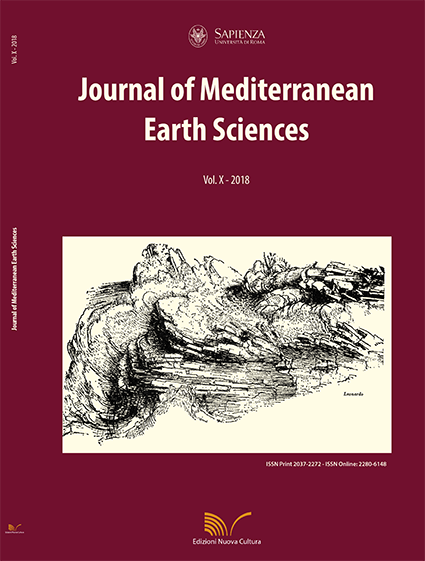Benthic foraminiferal assemblages from Messinian deposits (western Sardinia, Italy): preliminary report
DOI:
https://doi.org/10.3304/JMES.2018.002Abstract
Micropalaeontological analyses of benthic foraminiferal assemblages were carried out on stratigraphic sections from the Late Miocene of Sinis Peninsula (Capo San Marco, western Sardinia, Mediterranean Sea). Biotic index values and the relative abundance of the most abundant foraminiferal species have been used for a palaeoenvironmental reconstruction. The palaeoenvironmental significance of foraminiferal assemblages indicates a shallower trend from an upper bathyal-circalittoral environment to coastal lagoon facies that are characterized by variable salinity and some fluvial run-off episodes during the pre-Messinian Salinity Crisis stage. After a subaerial exposure, a siliciclastic carbonate platform developed at the start of the Messinian Salinity Crisis. The re-establishment of marine conditions during the Upper Messinian is marked by fossiliferous marly limestone and sandy marls (cfr. Terminal Carbonate Complex) bearing microfaunas (benthic foraminifera, ostracods, rare planktonic taxa) and macrofauna intercalated in siliciclastic fluvial deposits. During the Messinian stages, the paleoecological conditions in the Sinis Basin were intermittently suitable for sustaining marine biotas, indicating that this basin was not uninterruptedly desiccated.
Downloads
Published
How to Cite
Issue
Section
License
The submission has not been previously published, nor is it before another journal for consideration (or an explanation has been provided in Comments to the Editor).


